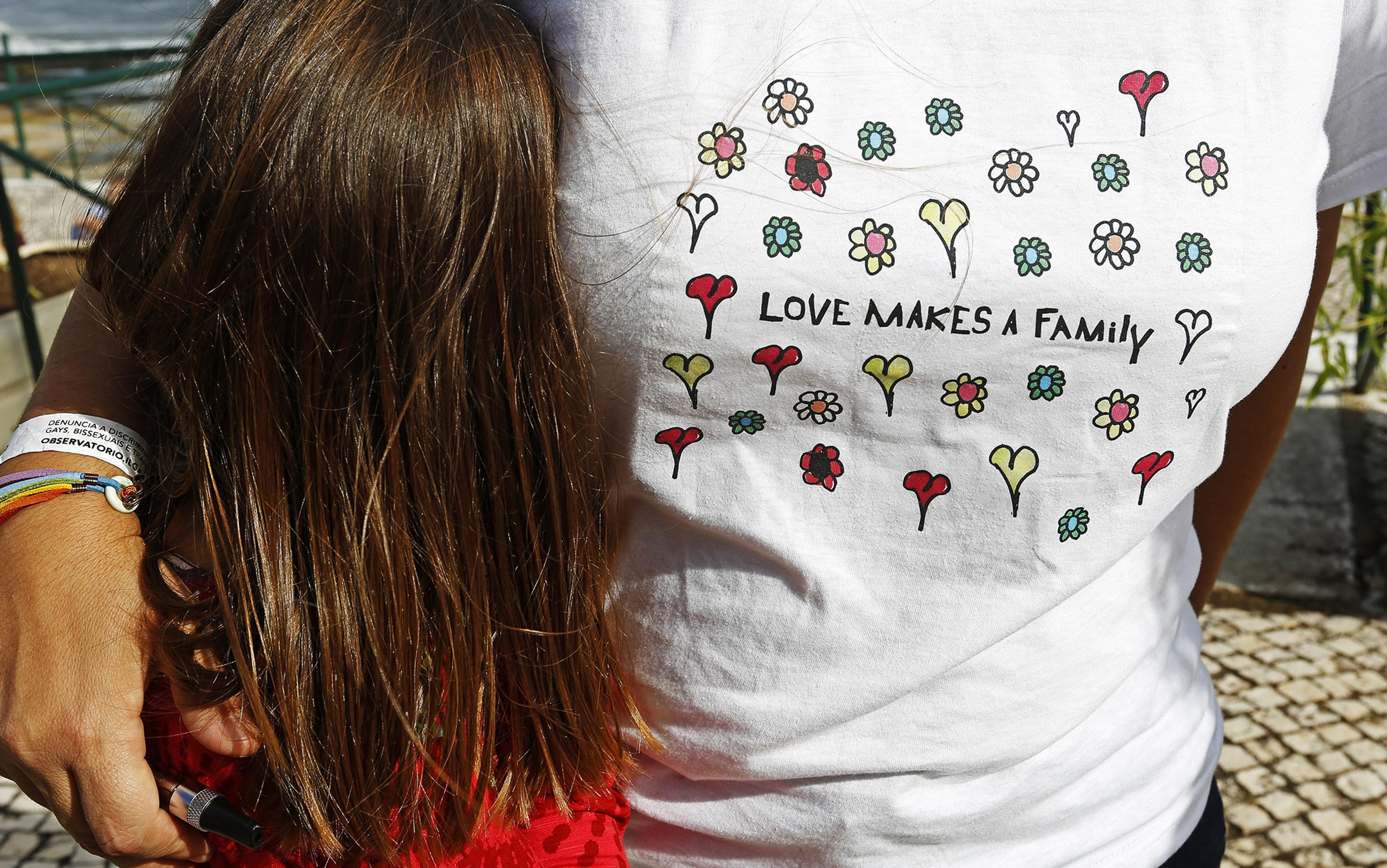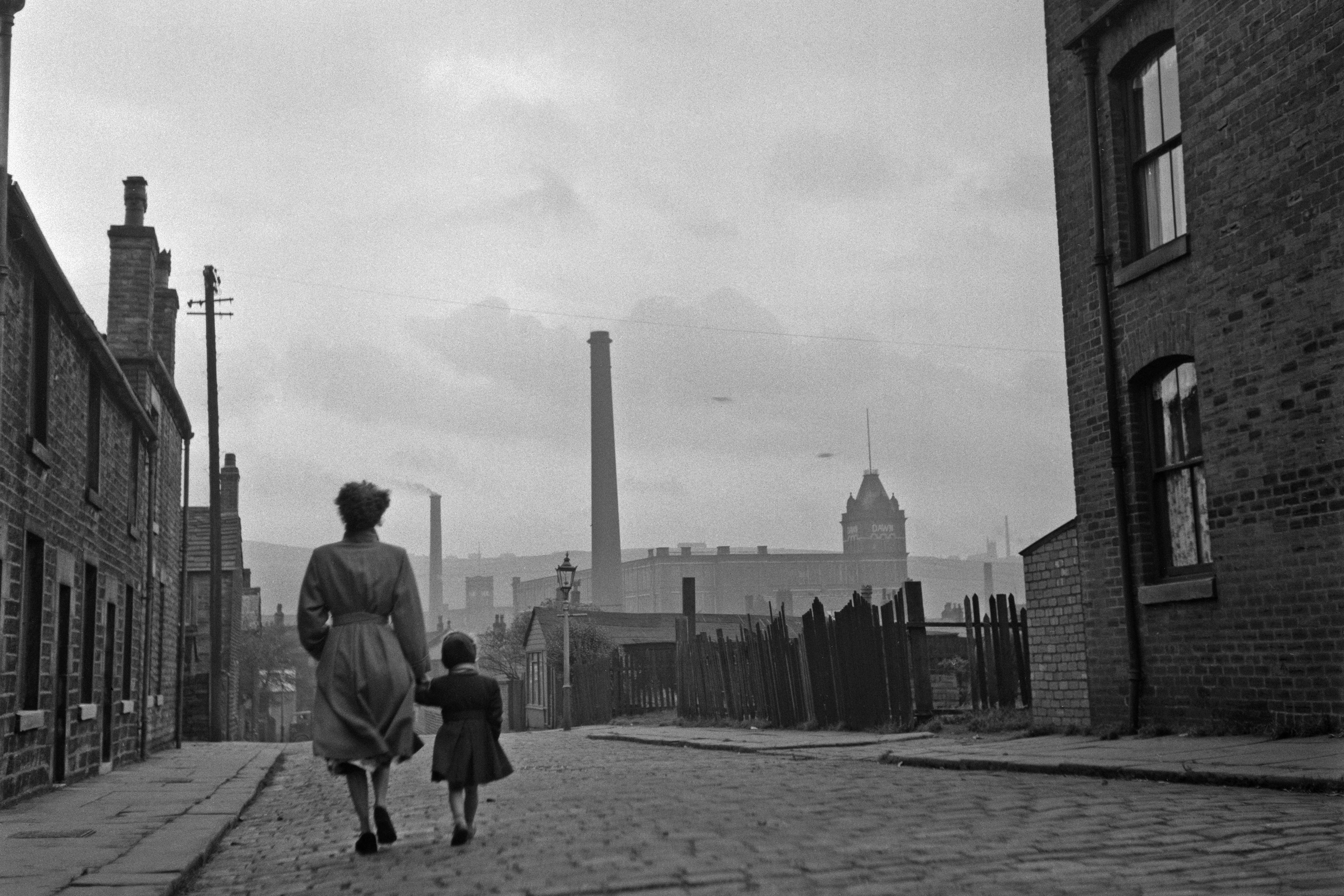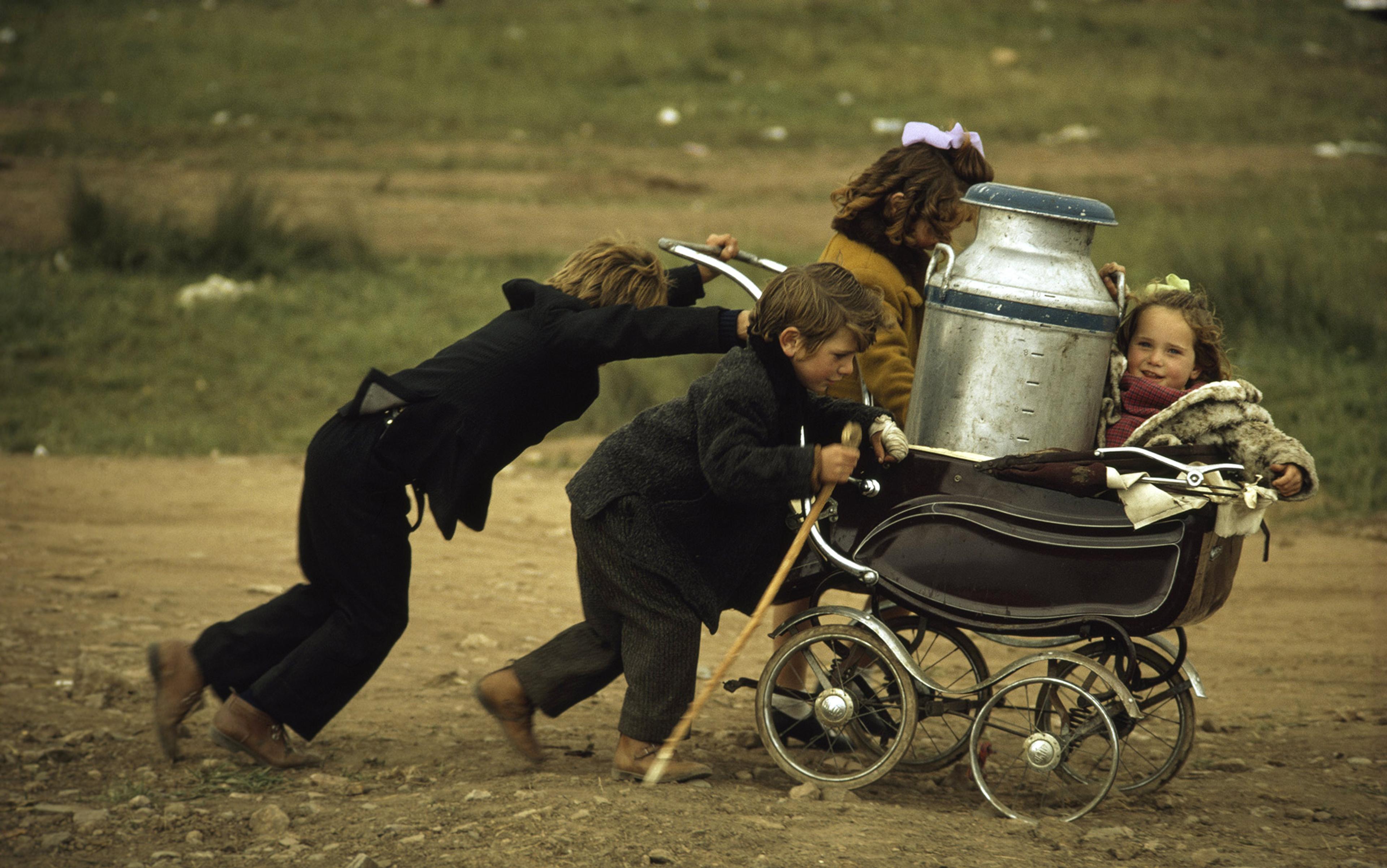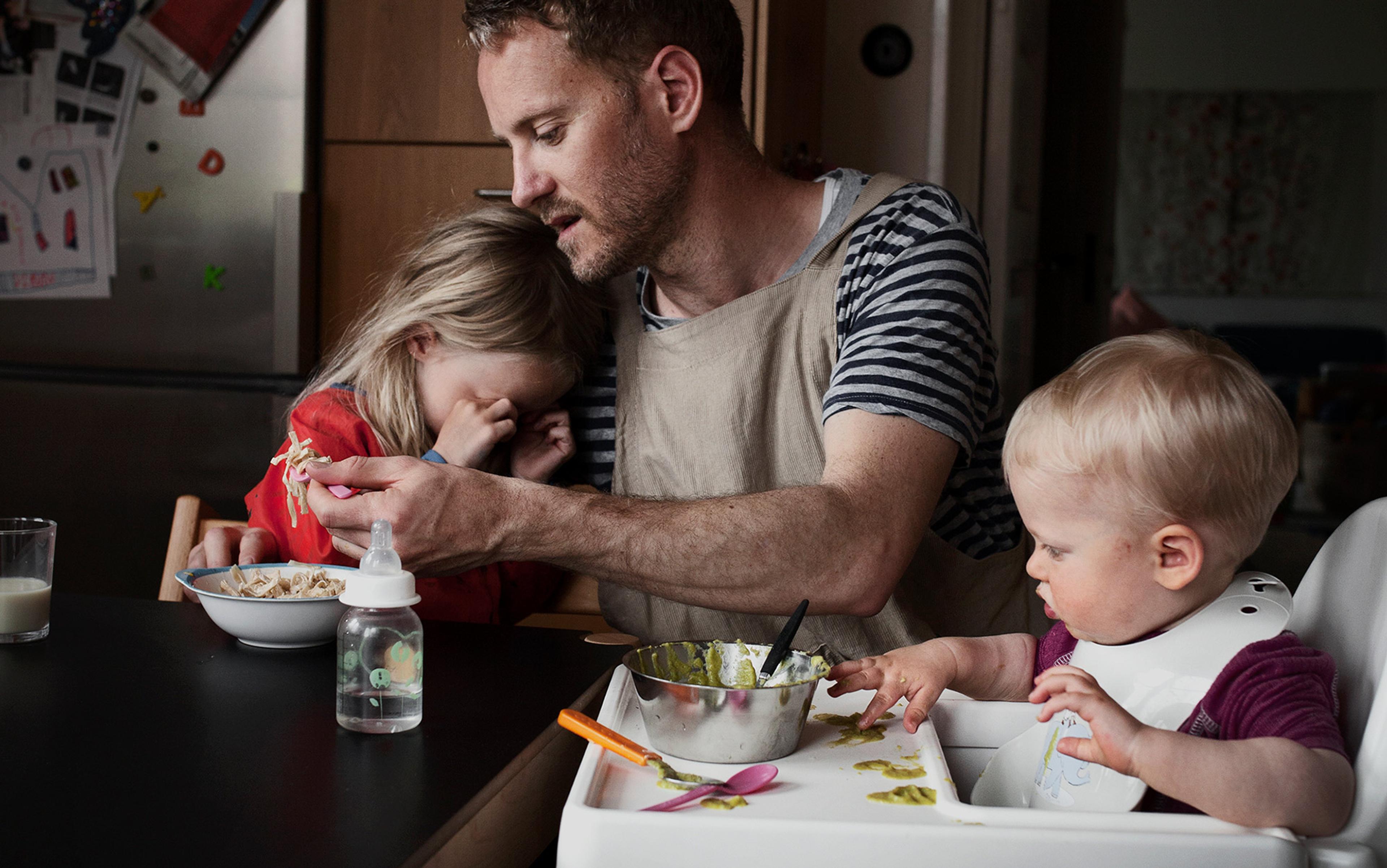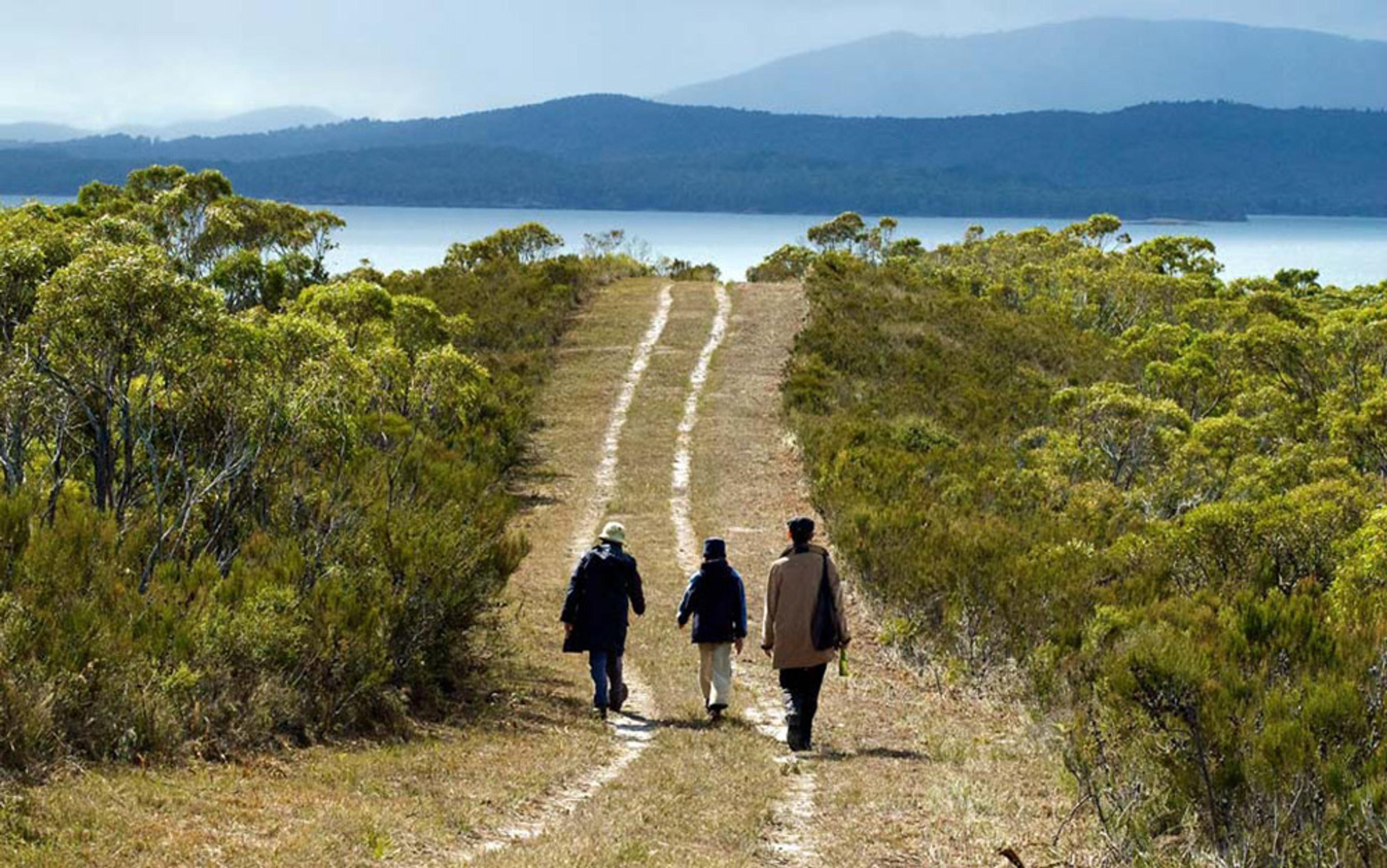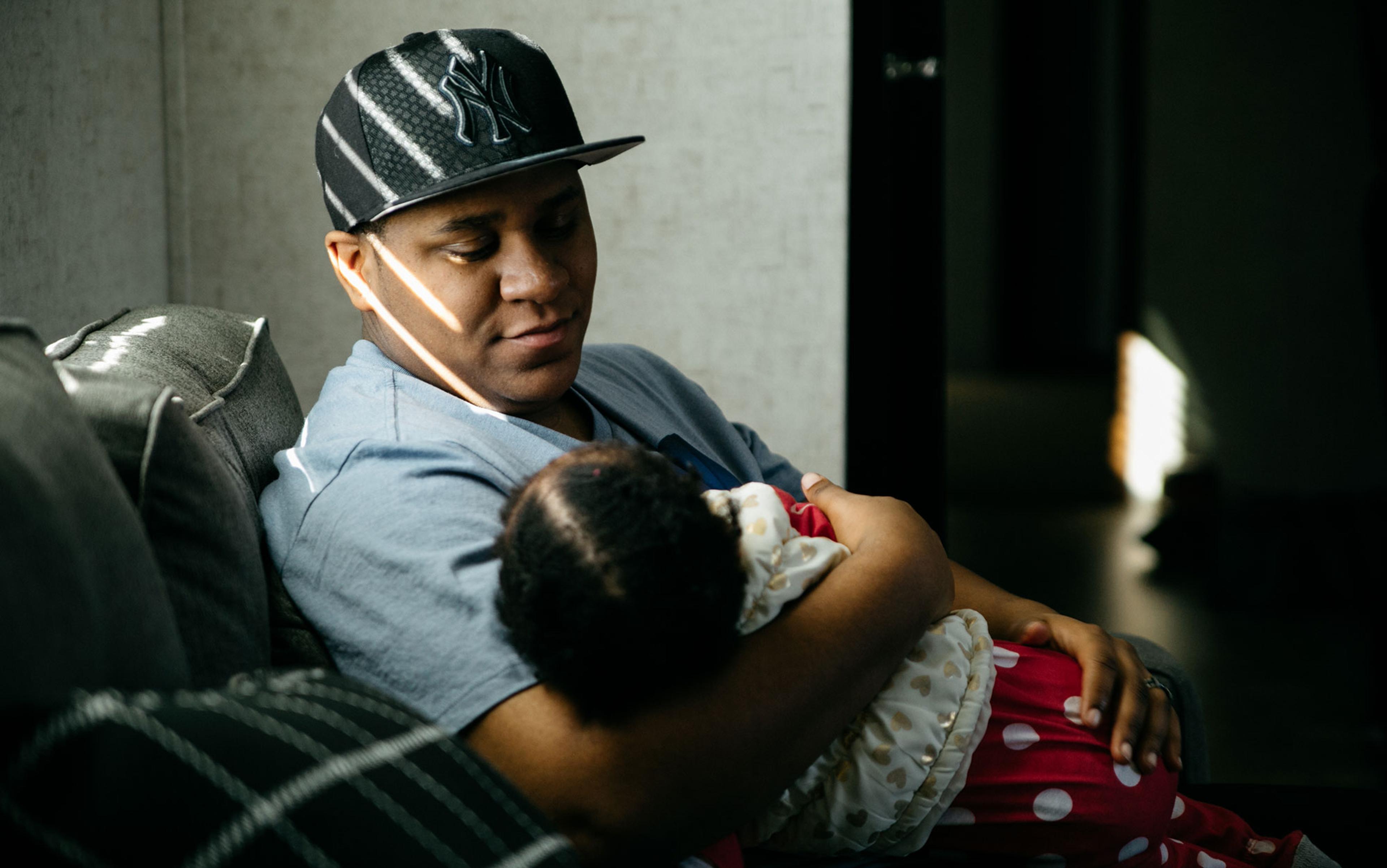At five years old, Fay Purdham announced that she wanted to be a mum. There was just one hitch: Fay was born Kevin. ‘And my mum said, no, no, no, you want to be a father,’ recalls Purdham. ‘I said, no, I want to be a mother. That’s when my mum knew: Oh, my child is different.’ Now in her late 20s, Purdham, who lives in Newcastle in northern England, hopes that a uterus implant is ‘the next stage for trans people’. She fantasises about being ‘the moany pregnant [mum] with big cankles and big stretch marks. Imagine being able to carry my own baby – ahhh, I’d love it.’
The Miss Transgender UK competitor (Purdham came third last September) is taking the next best option available. She’s hoping to raise £100,000 through Go Fund Me to pay a surrogate to carry her child, using sperm she froze before having gender reassignment surgery at the age of 21. Her quest has made national headlines: last October, the Daily Mail blared: ‘Transgender model wants to become first person in Britain to be both the mother and father of the same baby.’
Reproductive medicine has seen definitions of motherhood expand to embrace egg-donor mothers and adoptive mothers, in addition to the gestational, or birth, mother. Today there is a fourth category: the transgender mother. This can mean, among a variety of possibilities, a man with a uterus who has transitioned from a woman, and who stops taking hormone-replacement therapy to conceive; or a woman who has transitioned from a man using frozen sperm with a surrogate. Simply put, ‘motherhood’ and ‘fatherhood’ are no longer defined only by the chromosomes and sex organs with which we were assigned at birth but by the gender with which we choose to identify.
In 2014, Meghan Stabler, an American business executive and transgender woman, was named ‘Working Mother of the Year’ by Working Mother magazine – the first time the title has ever been awarded to a trans person. In 2013, the California-based non-profit Forward Together published Mother’s Day e-cards titled ‘Mama’s Day Our Way’ to reflect a new gender-fluid reality. And last year, President Barack Obama announced that gender identity should not be a barrier to foster care and adoption.
Organisations are scrabbling to keep up. The same year that Stabler won her award, the charitable New York Abortion Access Fund voted unanimously to no longer use the term ‘women’, fearing that they might alienate transgender men seeking terminations. The Midwives Alliance of North America (MANA) has also, in select paragraphs of its core competencies guidelines, replaced the words ‘woman’ and ‘mother’ with ‘pregnant individual’, ‘pregnant parent’ and ‘birthing parent’.
MANA’s move was not without backlash. An alliance of well-respected midwives joined together to state their concerns. In an open letter they spoke out against ‘accelerating trends… to deny material biological reality and further disconnect ourselves from nature and the body’ that have ‘harmful implications for women’.
At stake is what it means to be a woman and a mother – and who is allowed to be one. Writing in The Huffington Post, ‘Working Mother of the Year’ Stabler insists: ‘I’m just like any other mom’; her priority is juggling domestic duties with a high-pressured job. But her claim raises questions: is motherhood something innate, as we are so often told – a chemical reaction of love and self-sacrifice tied to the ‘transformative’ process of pregnancy and childbirth? Or, is it something that can be learned? Ultimately, is trans motherhood about emphasising similarities or, perhaps, about learning to embrace differences?
The battle over claims to ‘femaleness’ is a fierce one. ‘Motherhood is very obviously exclusively female. Persons who are not female cannot reproduce,’ insists the academic Sheila Jeffreys, an outspoken critic of the transgender movement and author of Gender Hurts: A Feminist Analysis of the Politics of Transgenderism (2014). Throughout history, Jeffreys argues, men have laid claim over women and their reproductive biology. She believes this pattern is being repeated by trans women. It is ‘yet another chapter in men’s rights and attempts to assert control over women’s bodies and the process of reproduction. Women are supposed to pretend that their bodies do not matter.’
In response, the trans movement has condemned Jeffreys as a TERF or ‘trans-exclusionary radical feminist’. Trans activists see Jeffreys, and those who share her position, as refusing to acknowledge a minority already suffering from horrific discrimination, in which reproductive rights are increasingly highlighted.
‘Are those who have transitioned from men the only “legitimate” women left?’
To combat prejudice, language must become more inclusive, activists argue. Pregnancy, for example, is no longer a women’s issue, it is a ‘uterus-owner’s issue’, according to transgender blogger Emmett Stoffer. Terms associated with the female body, such as ‘ovaries’, ‘vagina’ and even ‘woman’ are, meanwhile, an example of cisgender privilege (‘cis’ refers to those whose identity correlates with the gender assigned at their birth). In a post on the website Everyday Feminism Luna Merbruja, co-coordinator of the 2014 International Trans Women of Color Network Gathering, railed against the ‘constant (fucked-up) reminder that “real women” have menstrual cycles’. Open discussion of periods, this suggests, is an act of partisanship against those who will never bleed.
The upshot is confusion. High-profile trans women such as the Olympian Caitlyn Jenner ‘expect to be called women even as abortion providers are being told that using the term is discriminatory. So are those who have transitioned from men the only “legitimate” women left?’ asked the journalist Elinor Burkett in a New York Times opinion piece titled ‘What Makes a Woman?’ last year.
Gender is increasingly understood as something we can choose and (literally) change. It is also now seen as a spectrum in which individuals position themselves (or are positioned) anywhere between male and female. A person might be born with male organs, look like a man, and have lived in the past as male. But if such a man begins to identify as female, we must oblige and treat them as such. This massive experiment in self-determination – which denies biology and lionises self-perception – is helping to undercut, upset and unsettle the enshrined ideal of the birth ‘mother’.
Combined with this rise of identity politics, access to modern medicine has pushed new – physical and mental – frontiers. Doctors can now fashion vaginas and penises out of skin; trans people can add or remove their breasts, use hormones to grow or lose hair, and undergo plastic surgery to change their features. Uterus transplants, by contrast, are still in their infancy, but that they might be added to this surgical repertoire is itself telling.
Yet even in this brave new world, motherhood remains oddly sanctified. One clue as to why so traditional (and, some might say, suffocating) a role might be so important to trans women such as Purdham and Stable lies in the very fluidity of current conceptions of gender: for if the sex we are born with is no longer the chief determinant of what makes a ‘woman’, then maternity becomes a critical benchmark.
Biological determinism in Western tradition insists that children somehow ‘complete’ us. ‘There is this belief that women are biologically destined or programmed to be maternal,’ says Andrea O’Reilly, a pioneer of ‘motherhood studies’ at York University in Toronto. Accordingly, parenthood is pushed as the ultimate route to personal fulfilment, and cravings for motherhood are considered instinctual, an urge that kicks in at a certain age. In reality, O’Reilly insists, ‘we’re socialised to be maternal – it’s the way we rear girls’.
That ‘motherhood’ is a cultural entity, shaped by time and place, is clear from the vastly disparate concepts of what mothers are and how they should behave. In many aboriginal nations – in Australia, for example – children are raised not just by the biological mother but by multiple ‘aunts’ in tight-knit communities. In the Victorian era, the aristocracy’s offspring were routinely given over to wet nurses, nannies and governesses. In contrast, the ‘super-mom’ of 1950s and early ’60s America marked a historic milestone. Epitomised in popular culture in the TV series Happy Days by Marion Cunningham, she was white, middle-class, modest and monogamous. This apron-clad mother (a product of cookie-cutter suburbia) stayed at home and dedicated her life solely to her husband and children.
‘The assumption now is a woman can be an astronaut but you’re still going to be a mother’
How we mother has been subject to dramatic societal change in the West as a result of female emancipation. Chief among these shifts is the expectation that women can now have a career and children: the number of working mothers in the US has soared by 800 per cent since 1860, according to Ancestry.com. At the same time, many more women are choosing not to become mothers at all; in 2014, the US Census estimated that 47.6 per cent of women aged between 15 and 44 had never had children (among women aged between 40 to 44, 15.3 per cent were childless).
However, old customs die hard. Shelves in toyshops aimed at little girls continue to sag beneath the weight of dolls, baby carriages and miniature cooking stations. By contrast, male children, though they might also grow up expecting to be fathers, are not trained to see parenthood as innate to their sense of sex and self. ‘Women in their 20s are held by the “beauty myth” and in their 30s by the “mummy myth”,’ says May Friedman, an associate professor in women’s studies at Ryerson University in Toronto. O’Reilly agrees: ‘The assumption now is [as a woman] you can be an astronaut but you’re still going to be a mother.’
Mothering, in short, continues to be perceived as something natural and intuitive. Honest discussion about the ambiguities around motherhood – including unhappiness and regret, or rejecting the idea of having children of one’s own – remains, at best, uncomfortable; at worst, taboo. We can now change our gender at will, and yet society is as entrenched as ever in training girls to become mothers, and in valorising motherhood as a life goal.
So where does that leave transgender parents? Among the many intellectual challenges the trans movement has thrown down is the supposed toppling of the ideal of the perfect mother in favour of the more neutral and less loaded term the ‘good parent’. But is that really the case? Parenting among trans people is by no means uniform. Some trans women are as much in awe of mothering as they are wary of gender stereotypes. Purdham, for example, laments: ‘I’ll never experience that real connection that I carried my child’. ‘Intuitive’ motherhood, and heels: both cling to old-fashioned ideas of feminine aesthetics.
This matters more for a new, younger generation of trans people. One dramatic shift over recent decades is how (and when) trans people are becoming parents. In the past, most had children pre-transition. One early example is the acclaimed Welsh travel writer Jan Morris, who, as the married journalist James Morris, fathered five children before undergoing a sex change in 1972. The bittersweet comedy Transamerica (2005) addressed a trans woman coming to terms with accidentally siring a son 17 years earlier. And the recent Amazon series Transparent (2014-) deals more broadly with a family coming to terms with learning that their father is transgender.
Today, children as young as six are living as different genders from which they were born; puberty (as in the case of the outspoken trans model Andreja Pejic) is being stalled or blocked altogether; and reproductive rights are becoming more central: widely discussed options for parenthood later in life include freezing sperm, storing eggs, or using a surrogate. Parenting is now more likely to be undertaken when a trans person is already living in their desired gender.
For Purdham, motherhood is all-consuming. When we meet at a smart London hotel, she insists she is now a ‘woman’, not part of a ‘new, ultra gender’. And as a woman she buys into the overwhelming urge to become a mother. On her Go Fund Me page, Purdham writes: ‘I beg and plead with humanity the feeling I feel to become a mum is overwhelming its my dream to be called mum by my child please help me x.’ Her timeframe? ‘Oh god,’ she tells me, leaning forward, ‘tomorrow. Yesterday.’
Purdham believes femaleness makes a mother. But is there also another route? In her book Maternal Thinking: Toward a Politics of Peace (1989), the philosopher Sara Ruddick promoted the use of the verb ‘mothering’ as gender-neutral; she proposed that rather than being a product of our sex and gender, ‘mothering’ is a practice. In the past, mothering has been associated solely with female work, representing the ‘female’ qualities of gentleness, softness, kindness. But in today’s world – where men can stay at home, women can go to work, and gender can be switched – ‘mothering’ must be expanded to include others too.
Lesbian couples provide an example of once-alternative parenting practices that are now mainstream
Gay rights have paved the way. The Williams Institute in Los Angeles has stated that roughly 16 per cent of same-sex couples were raising children in 2009; and it is now legal in all US states to adopt, regardless of a couple’s gender. Past discourse around same-sex parenting treads the same path as trans parenting now. Namely: ‘Can they be parents; should they be parents; how do they parent? I think the transgender movement is picking up this conversation that we started,’ says O’Reilly. The past decade, in particular, has witnessed a conscious de-gendering of ‘mothering work’ in academia, ‘a real attempt to separate the work of mothering from the biology of the maternal’.
Lesbian couples provide an example of once-alternative parenting practices that are now mainstream. Motherhood is ‘understood as something that can be shared between two women, not something necessarily associated with giving birth and breastfeeding,’ says Susan Goodwin, an associate professor at the University of Sydney and co-author of The Good Mother: Contemporary Motherhoods in Australia (2010).
Trevor MacDonald is one man who is performing ‘mothering’ work – or, in his own words, ‘nurturing’. MacDonald transitioned from female to male in his early 20s. He took testosterone to grow a beard and lower his voice; he also received a double mastectomy but opted out of full gender reassignment surgery, retaining his uterus and vagina. After meeting his male partner and getting married, the pair, who identify as gay, decided to start a family.
‘We realised that, between us, we had the parts to make our own baby,’ MacDonald tells me. He ceased his testosterone shots, fell pregnant, and had his first home birth in 2011. Throughout, MacDonald identified as male – his children, a boy and a girl aged five and one, call him Dada. But he also breastfed (or, more gender-neutrally, ‘chestfed’) his kids as infants, supplementing their needs with donated breastmilk via the network Human Milk 4 Human Babies.
MacDonald has met with open hostility: one woman chastised him that his baby ‘needs a real boob’ when he nursed him on a flight. But on the whole the process has led him to question not only trans rights but male rights, too – which he discusses in his book Where’s the Mother? Stories from a Transgender Dad (2016).
‘People saw a Dad with a very young infant and would think, where’s the mum? Why isn’t she looking after this baby?’ he explains. ‘The assumption in our culture is that women should be doing all of the childcare, especially with really young children. That puts huge expectations on women, and it also really negatively judges men.’
Not fitting neatly into any one box has caused problems. MacDonald attended support meetings held by his local branch of the international breastfeeding organisation La Leche League Canada (LLLC). Thankful for their help, he then applied to work as a volunteer. MacDonald’s application was turned down: the rejection letter read that they needed ‘experience of mothering’. (Others have accused him of the opposite: the conservative news website Breitbart.com scoffed that MacDonald’s decision to have children is testament ‘that no amount of cosmetic surgery could allow him to escape the innate instincts latent in his biology’.)
the current emphasis on breastfeeding as a moral and practical choice is of its time: hiring a wet nurse was common in the early 20th century
‘It was interesting because I would say I’ve never identified as a mother at all but the way that our culture defines it and talks about it, I can see in some ways how I have been mothering through breastfeeding or mothering my kid,’ muses MacDonald, clarifying that he would call it ‘parenting’. (LLLC has since changed its application criteria and MacDonald is now a volunteer.)
In ‘The Ties that Bind Are Broken’, an essay in Essential Breakthroughs: Conversations About Men, Mothers and Mothering (2015), A J Lowik states that the ‘physiological process of lactation is linked to moral constructions of “good” mothers (and fathers)’ – a construction now challenged by trans parenting. Yet, as Lowik points out, much of the current emphasis on breastfeeding as a moral, as well as practical choice, is of its time: after all, it was common in the early 20th century to hire wet nurses to breastfeed children.
MacDonald views his uterus, eggs and vagina as functional sex organs, not attached to any one gender. They are simply ‘parts needed to make a baby’. Breastfeeding for him is also utilitarian, a way to feed an infant. For others, it’s more meaningful. When the American trans man and bar manager Nick Bowser fell pregnant with his wife, the trans woman and drag artist Bianca (neither had undergone sex reassignment surgery), he admitted it was ‘the darkest time in my life’. ‘My brain was telling me that I was one person. My body looks like a completely different person,’ Bowser told the ABC News TV show 20/20 last year.
A gender-fluid world might help shake up previously rigid expectations of what roles each parent should have, but to believe it will create a genderless utopia – if that is indeed what utopia looks like – is naïve. ‘Trans mothers will really change the landscape of motherhood,’ says Goodwin. ‘But I don’t doubt for a second that trans mothers won’t be judged or evaluated and have their own forms of standards.’
Trans fathers, too. When Thomas Beatie courted media attention in 2007 as the ‘Pregnant Man’, some commentators questioned whether he could rightfully be considered ‘male’ after using his uterus. Then there is the issue of the ‘good trans dad’ who, as an ironic usurper of the ‘good mother’, must be sacrificial. As Lowik writes: ‘A good trans dad, then, is one who breastfeeds. He does it in spite of any gender dissonance he might feel and in spite of his surgical history. He must ignore questions about whether he is a “real man”.’
The process of becoming a trans parent – whether through adoption, surrogacy, natural birth or changing gender after having had children – is fraught with difficulties. In a society that heavily romanticises motherhood, the chief challenge is prejudice: the activist Darby Hickey claims that she is demonised as ‘ill-fit to be a mother’ because she is transgender.
Social media provides an ever-present platform to closely self-police ‘correct’ methods of child-rearing. Mothers promote themselves, expose themselves to criticism and openly judge others. In The Huffington Post, Hickey writes that she is ‘plagued by doubts about whether I’m doing a good job, whether I’m a “good mom”’ – doubts heightened by her trans identity: ‘If my son wears a barrette in his hair or some pink, frilly pants, I’m afraid. Afraid people will think I’m trying to indoctrinate him. Afraid he’ll be harassed. Afraid other parents won’t want their kids to play with him.’
‘There are a million non-gender specific baby names, but no non-gender specific parent names’
For the Sydney-based trans woman Tea Uglow, parent to two young sons with her ex-partner (both born before she ‘came out’), the ‘most important thing is to not try and justify your previous existence – it’s a forward-looking perspective. There is no benefit in trying to rewrite history.’
Uglow no longer wants to court the masculine label of ‘Dad’. Yet her ex-partner is uncomfortable in sharing the word ‘Mum’, fearing a takeover of her role. ‘It’s awkward,’ Uglow admits. ‘There are a million non-gender specific baby names, but no non-gender specific parent names. When the words exist, it will enable us to talk about the idea. Words are created to fill needs. My children are not going to yell “Parent” when they fall over and graze their knee or when I come home.’
Expectations can, and will, shift. But – despite the new visibility of transgender politics – an entire overhaul of gender is unlikely. Ultimately, ‘we have no way of taking the experiment out of the context in which we live,’ says O’Reilly – and let’s not forget that, for the majority of the population, male and female binaries still govern. It is yet to be seen whether the trans movement will act to destabilise, or in fact only reinforce, the way that gender is sanctified around parenthood.
Purdham is unfazed. She shrugs her shoulders and flicks her long hair. ‘Nobody ever gives you a handbook to life. People make it too serious,’ she says, staring at the outline of a cinnamon heart floating on her frothy coffee. ‘Let it up a little. I think being a trans parent will be exactly the same as being a normal parent: frigging hard.’
